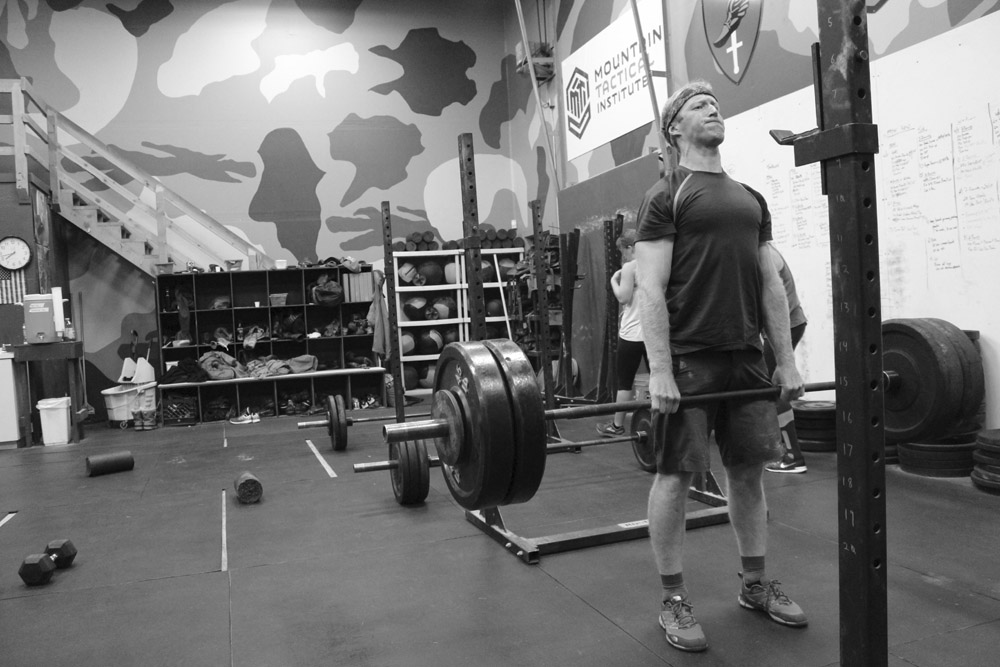By Rob Shaul
BLUF
Remote MTI Lab Rats showed nearly 10% strength gain over 5 strength exercises following a new “Big 36” strength progression for 3 weeks. Eight remote lab rats completed the cycle. Below are the average 1RM strength gains:
- Back Squat – 12.08%
- Bench Press – 7.13%
- Hinge Lift – 10.82%
- Push Press – 8.42%
- Craig Special – 9.27%
Average % Gain: 9.54%
Background
MTI’s “Big 24” Strength Progression has proven to be one of our most popular and successful progressions over the years. Previously, an internal mini-study found that Big 24 Progression yielded an average 8% 1RM strength increase across 3 strength exercises.
Big 24 deploys a very simple progression based on pounds, and an 8 x 3 set/rep scheme – for 24 total loaded reps. The first three sets of each exercise are prescribed warm up sets, and sets 4-8 – five total – are at the heavy, progression load.
The power of Big 24 comes through these exercises and a simple but aggressive progression. After 3RM assessment, in the first follow-on progression, the athlete drops 10# from his/her 3RM (or 2RM) and completes rounds 4-8 at that load (5 Rounds total). In the second progression, the athlete drops just 5# from his/her 3RM and completes rounds 4-8 at that load. In the final progression, the athlete completes rounds 4-8 at his/her 3RM… then they re-assess and start the progression all over again.
“Big 36” is a simple variation of this progression approach which deploys a 6 x 6 set/rep scheme. The loading approach is the same and aggressive. After 6RM assessment, in the first follow-on progression, the athlete drops 10# from his/her 6RM and completes set 4-6 at that load – 6 reps each set (3 sets total). In the second progression, the athlete drops 5# from his/her 6RM and completes rounds 4-6 at that load. In the final progressi3n, the athlete completes rounds 4-6 at his/her 6RM… then they re-assess and start the progression all over again.
This mini-study sought to assess strength gain for high training age athletes over 3 weeks of Big 36 progression. Five classic barbells strength exercises were for 1RM the Friday before beginning the Big 36 progression on the following Monday:
- Back Squat
- Bench Press
- Hinge Lift
- Push Press
- Craig Special
At the end of the 3 weeks of the Big 36 progression, these same exercises were again tested for 1RM and the pre and post-cycle 1RMs compared.
These same exercises were also trained using the Big 36 progression.
Here was the weekly schedule and below a chart showing the progression:
- Monday: Back Squat, Hinge Lift, Craig Special 6RM Assessment or Big 36 Progression
- Tuesday: Bench Press, Push Press 6RM Assessment or Big 36 Progression
- Wednesday: 10-Minute short Work Capacity effort and 10-Minute Chassis Integrity (core) circuit.
- Thursday: Back Squat, Hinge Lift, Craig Special Big 36 Progression
- Friday: Bench Press, Push Press 6RM Big 36 Progression
Going into this Mini Study, I had two research questions:
- Would the lab rats be able to complete the progression as prescribed? The Big 24 progression is one of our most intense. Big 36 would deploy lighter loading (6RM is lighter than 3RM), one few set at load (3 vs 4), but higher reps per set (6 vs 3).
- Would Big 36 match Big 24 in 1RM strength improvement? According to the textbooks it shouldn’t. In general, you want to train max effort strength with sets of 1-3 reps at 85% or higher 1RM. In terms of training max effort strength, Big 36’s loading is lighter than convention and it’s reps per set is higher than convention.
Results/Discussion
See the chart below for results from this cycle:
I was pleasantly surprised with these results, which seemed to better the max effort strength gaining effect of the original Big 24 cycle – 9.5% average 1RM improvement vs. 8%.
Again, on paper and by textbook, I would have predicted that Big 24 would have increased max effort strength more. Why? heavier overall relative loading per athlete. See the chart below – you’ll see that the Big 36 athletes were working with loads mostly below the 85% of 1RM thought required to significantly increase max effort strength:
Next Steps
Despite this study’s results, I’m not quite ready to replace our classic Big 24 progression with Big 36. Rather, I think I’ll add Big 36 progression to our strength programming toolbox.
Moving forward, perhaps in a future study, we’ll test a “Big 48” progression with a 6×8 set/rep scheme.
Questions? Email coach@mtntactical.com
Comments? Please enter your comment below.
You Might Also Like MTI’s Big24 Strength Training Plan
STAY UPDATED
Sign-up for our BETA newsletter. Training tips, research updates, videos and articles - and we’ll never sell your info.



